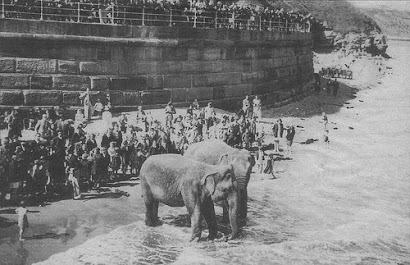All known living things are divided into five major groups, known as Kingdoms.
Monera and
Protista contain tiny, primitive organisms such as the various types of bacteria and other microbes.
Animals and
Plants are well known to us and relatively easy to identify.
The remaining Kingdom is
Fungi. Unlike plants, Fungi cannot produce their own food by photosynthesis. Instead they absorb nutrients from their surroundings. They do not need the sun and they thrive in dark, damp places. Hence the black mould around your bath, the white coat of fluff on that orange that's been in the fruit bowl too long, and nasty, itchy Athlete's Foot.
Nevertheless a short Autumn walk in an area of woodland such as that around Falling Foss can yield beautiful examples of Fungi. The old deciduous trees around the waterfall (largely oak, birch and ash etc.) provide ample sustenance, whether alive or dead and decaying. Also the leaf litter that blankets the forest floor in Autumn hides many interesting surprises if you take time to look.




